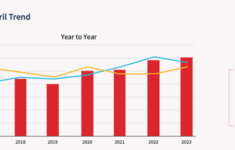When John Couch is certain a storm will hit Hatteras Island, he goes into action, moving merchandise in his auto parts store from bottom shelves to top ones and hauling away the most valuable items.
But at 64 years old, Couch is less and less enamored of spending eight hours packing up his property. So his ears perked up when he learned about a new forecasting model from the U.S. Geological Survey and the National Oceanic and Atmospheric Association that’s intended to give a better idea of how much ocean water will overrun an area.
“Any and all information is always helpful,” says Couch, who owns the Lighthouse Service Center and Lighthouse Auto Parts along North Carolina’s Outer Banks. “You don’t want to put up stuff unless you really have to.”
The USGS is running its coastal change forecast model to predict how far a storm’s waves will push water up the beach—whether it will go just to the dunes, over the dunes, or even farther onto roads and property. Oceanographers are in the pilot stages of a new implementation of the model that would predict beach changes in all weather conditions.
Pilot Program
As part of the pilot program, hour-by-hour forecasts of potential beachfront changes caused by wave conditions are underway in some areas of North Carolina, Massachusetts and Florida, said USGS research oceanographer Hilary Stockdon. The pilot program runs all the time for all sorts of weather, not just big storms such as hurricanes and nor’easters. Eventually, the forecasts—which give details for the coming days—will be available for all Gulf and Atlantic states up to 102 hours before storms.
The pilot program was running in North Carolina during recent Tropical Storms Bonnie and Colin, but the forecasts aren’t yet available publicly. Officials hope the information for the three states will be online in three months.
“In places like the Outer Banks, there could be a high tide and winds from a particular direction that are going to overwash Highway 12 and cut off transportation,” Stockdon said, referring to the narrow road that provides the only nonferry access to Hatteras Island. “Those are the kind of events we want to be able to help locals with.”
Since 2011, the model has been used to forecast coastal change during storms that make landfall. USGS used it most recently when Colin made landfall in Florida. Researchers are studying the results to determine the accuracy of their forecasts. Those are available to the public through the USGS coastal change hazards portal.
The model adds data about what’s called wave run-up to information on storm surge and tides. That results in a total on the amount of water that will come ashore in any kind of storm, said USGS research oceanographer Joseph Long. Storm surge measures how high the ocean will rise; wave run-up determines how big the waves will be at the shoreline, on top of the rising ocean.
“It’s the addition of the two,” he said. “They’re both important. In the past the forecasts have only given us the storm surge…A lot of times, they’re equally important.”
The new model could save lives on vulnerable barrier islands such as the Outer Banks by advising residents of when escape routes might be cut off, said Jeff Masters, meteorology director of the private Weather Underground.
For example, Masters wrote in an email, during Hurricane Ike in 2008, residents of Texas’ Bolivar Peninsula had their only route cut off nearly 24 hours before the storm arrived. Seven people died on the peninsula from storm surge—several while attempting to escape, he said.
Last fall, Hurricane Joaquin stayed well to the east of the Outer Banks. Yet the USGS model accurately forecast dune erosion that occurred in Duck and overwash on a road in Kitty Hawk, Long said.
“Water levels got pretty high, but there wasn’t a big surge,” he said. “That’s the kind of event you would miss if you’re only forecasting storm surge.”
The USGS uses a camera that takes before and after photos at the Army Corps of Engineers field station in Duck to check the accuracy of its forecasts. Officials also want to install cameras on the northeast coast of Massachusetts; in Jupiter, Fla.; and on the Gulf of Mexico at Tampa Bay.
On the Outer Banks, Dare County didn’t issue a mandatory evacuation before Sandy struck in 2012, buckling part of N.C. Highway 12. Drew Pearson, now emergency management director for the county, said, “This product may have told us what we were going to get, and we may have been able to make a different decision.”





















 Deterioration Continues in U.S. Commercial Auto Insurance Segment After $5B Net Loss in 2023
Deterioration Continues in U.S. Commercial Auto Insurance Segment After $5B Net Loss in 2023  Job Search Strategy Varies by Generation: Survey
Job Search Strategy Varies by Generation: Survey  InsurTech Innovator Has High Hopes for Ascend
InsurTech Innovator Has High Hopes for Ascend  The Compliance Imperative: How Louisiana’s House Bill 672 Is Reshaping the MGA and TPA Landscape
The Compliance Imperative: How Louisiana’s House Bill 672 Is Reshaping the MGA and TPA Landscape 